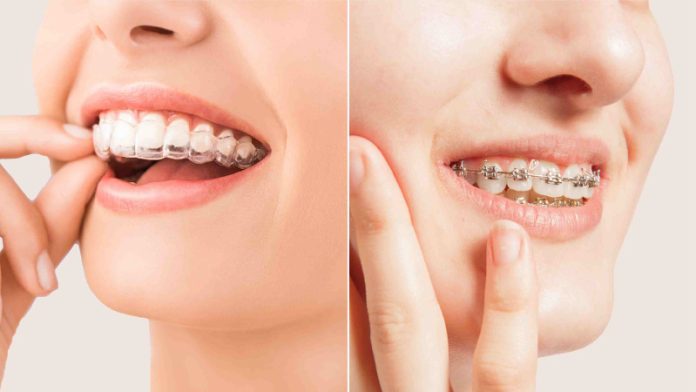Choosing the right braces or aligners can change your smile and boost your confidence. You might be considering traditional braces, which remain a reliable choice for many. On the other hand, newer options like Invisalign in Redlands offer a discreet solution. This popular choice uses clear aligners that fit over your teeth, making them almost invisible to others. Each option has its strengths. Traditional braces handle complex adjustments well. Invisalign, however, offers comfort and flexibility. Both options can improve your dental health significantly. You need to weigh your lifestyle, needs, and preferences. Consulting an orthodontist is crucial. They will guide you through each choice, ensuring you understand the benefits and limitations. Taking care of your teeth today sets the foundation for a healthier tomorrow. Explore these options to find what fits best for you. Your journey to a better smile begins with understanding your choices fully.
Traditional Braces
Traditional braces have been a staple in orthodontics for decades. They consist of metal brackets and wires that gradually move teeth into place. These braces are effective for more complex dental issues. They offer precise control over tooth movement, which is crucial for significant realignments. Though they are visible, modern versions come in smaller sizes and different colors, making them less obtrusive.
Clear Aligners
Clear aligners, like Invisalign, are an innovative alternative to braces. They are custom-made and fit snugly over your teeth. These aligners are removable, which makes eating and cleaning your teeth easier. You won’t have to worry about food restrictions. Wearing aligners requires discipline, as you must wear them for most of the day to be effective. Regular changes of aligners are part of the process, ensuring continuous progress.
Lingual Braces
Lingual braces offer a unique option for those seeking discretion. Positioned behind the teeth, they stay hidden from view. Similar to traditional braces, they use brackets and wires to align teeth. Lingual braces are suitable for most dental corrections. Their main advantage is invisibility from the front. However, they may be less comfortable at first and require specialized care.
Ceramic Braces
Ceramic braces function like traditional metal braces but use clear or tooth-colored brackets. This makes them less noticeable. They are a popular choice for adults and teenagers who seek a more aesthetically pleasing option. They work well for most orthodontic issues. However, they can be more fragile than metal braces.
Comparison Table
| Type | Visibility | Comfort | Suitability |
|---|---|---|---|
| Traditional Braces | Visible | Moderate | Complex Adjustments |
| Clear Aligners | Nearly Invisible | High | Mild to Moderate Adjustments |
| Lingual Braces | Invisible | Moderate | Most Adjustments |
| Ceramic Braces | Less Visible | Moderate | Mild to Moderate Adjustments |
Consulting a Professional
Before deciding, consult with an orthodontic specialist. They will assess your dental needs and recommend the best course of action. Many factors influence the choice, including the severity of misalignment and your budget. A professional assessment ensures you receive a tailored treatment plan. The American Association of Orthodontists provides resources for finding qualified professionals.
Maintaining Oral Health
Regardless of your choice, maintaining good oral hygiene is essential. Braces and aligners require specific care routines. Brushing and flossing become more critical to prevent plaque and cavities. With braces, special tools may be needed to clean effectively. Aligners should be cleaned regularly to avoid discoloration and bacteria buildup. Regular dental visits are important for monitoring progress and ensuring optimal results.
Final Thoughts
Your journey to a better smile involves understanding your options and choosing what fits your needs. Each type of orthodontic treatment has unique benefits. Whether you opt for traditional braces or modern aligners, the key is commitment to the process. By staying informed and working closely with professionals, you set the stage for a healthier, brighter smile. Start your path to dental health by learning more and consulting experts for personalized advice.






